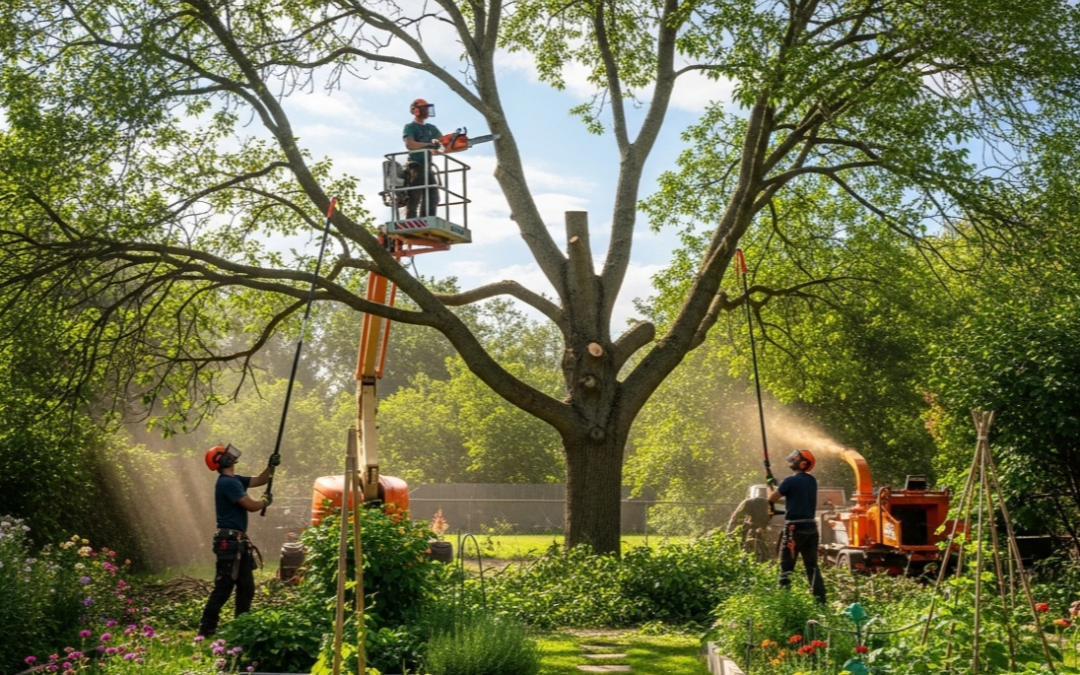Introduction
Trees play an essential role in any landscape, offering shade, aesthetic appeal, and ecological advantages. Nevertheless, when trees become overly large or dense, they may create excessive shade that obstructs the growth of other plants, especially in vegetable gardens and flowerbeds that need full sunlight. Thoughtful tree cutting, or pruning, is a crucial practice to maintain a healthy equilibrium between a flourishing garden and the well-being of your trees.
Why It's Important
Sunlight serves as the main energy source for plants via the process of photosynthesis. Inadequate light can lead to stunted growth, leggy appearances, and reduced productivity in plants. By carefully pruning trees, you can:
- Enhance Photosynthesis: Ensure that vital sunlight penetrates your plants, resulting in more robust growth and improved yields.
- Boost Air Circulation: Reducing the density of the canopy enhances airflow, which aids in lowering humidity and minimizing the likelihood of fungal diseases and pests.
- Minimize Competition: Tall trees vie with smaller plants for water and nutrients. Pruning mitigates this competition, providing your garden with a greater opportunity to flourish.
- Visual Appeal: A properly pruned tree appears more symmetrical and can elevate the overall aesthetic of your garden.
Key Techniques for Pruning
- Crown Thinning: This technique entails the selective removal of smaller branches from within the tree’s canopy. This process facilitates the passage of more dappled light to the plants situated below, without significantly altering the tree’s shape.
- Crown Raising (or Lifting): This method consists of removing the lower branches of a tree to enhance light penetration and create more open space at ground level. It is especially beneficial for vegetable beds or lawns that are experiencing shading.
- Crown Reduction: This approach involves a more substantial cut that diminishes the overall height and spread of the tree’s canopy. It is an appropriate choice for very large trees that cast extensive shadows, but it must be executed with caution to prevent stressing the tree.
- Selective Limb Removal: At times, it is necessary to remove only a few specific branches that are directly obstructing sunlight to a garden bed. This action can lead to a significant improvement while maintaining the tree’s overall structure.
When to Prune and Important Tips
- Timing: For the majority of trees, the optimal period for pruning is during late winter or early spring when the tree is in a dormant state. This approach reduces stress and promotes new growth in the spring. Nevertheless, various species may have distinct needs, so it is advisable to investigate the specific requirements of your tree.
- Don’t Overdo It: A common guideline is to refrain from removing more than 25% of a tree’s canopy within a single season. Excessive pruning can compromise the tree’s strength, rendering it vulnerable to diseases.
- Hire a Professional: For larger trees or intricate pruning tasks, it is strongly advised to engage a certified arborist. They possess the expertise and equipment necessary to evaluate the tree’s health and execute cuts that optimize light exposure while safeguarding the tree’s long-term health and safety.
Conclusion
Strategic tree cutting serves as an effective method for gardeners aiming to enhance their planting area for optimal growth. By grasping various techniques and recognizing the significance of appropriate timing, one can cultivate a harmonious and lively garden that reaps the rewards of both the aesthetic appeal of trees and the plentiful sunlight.

